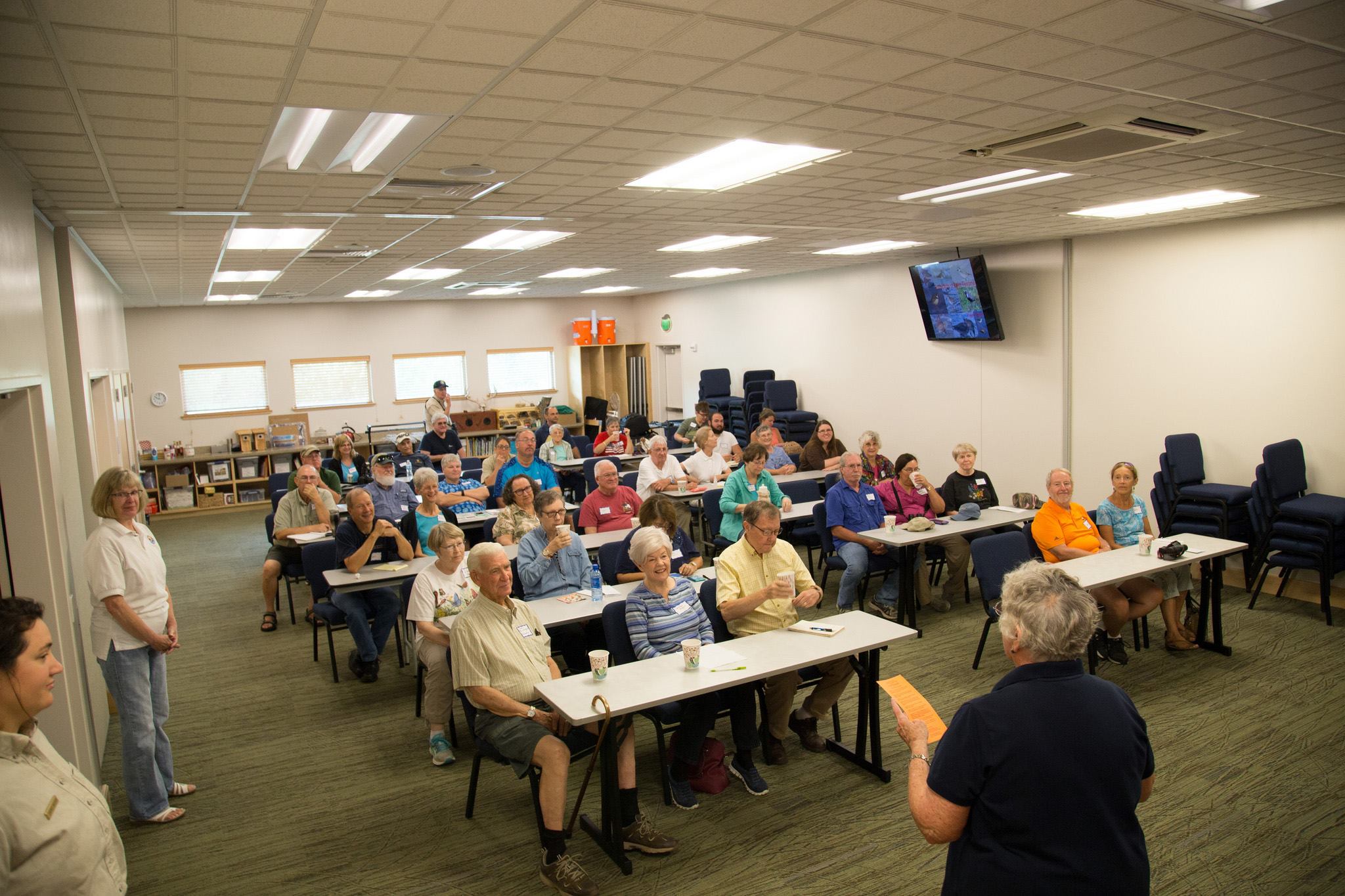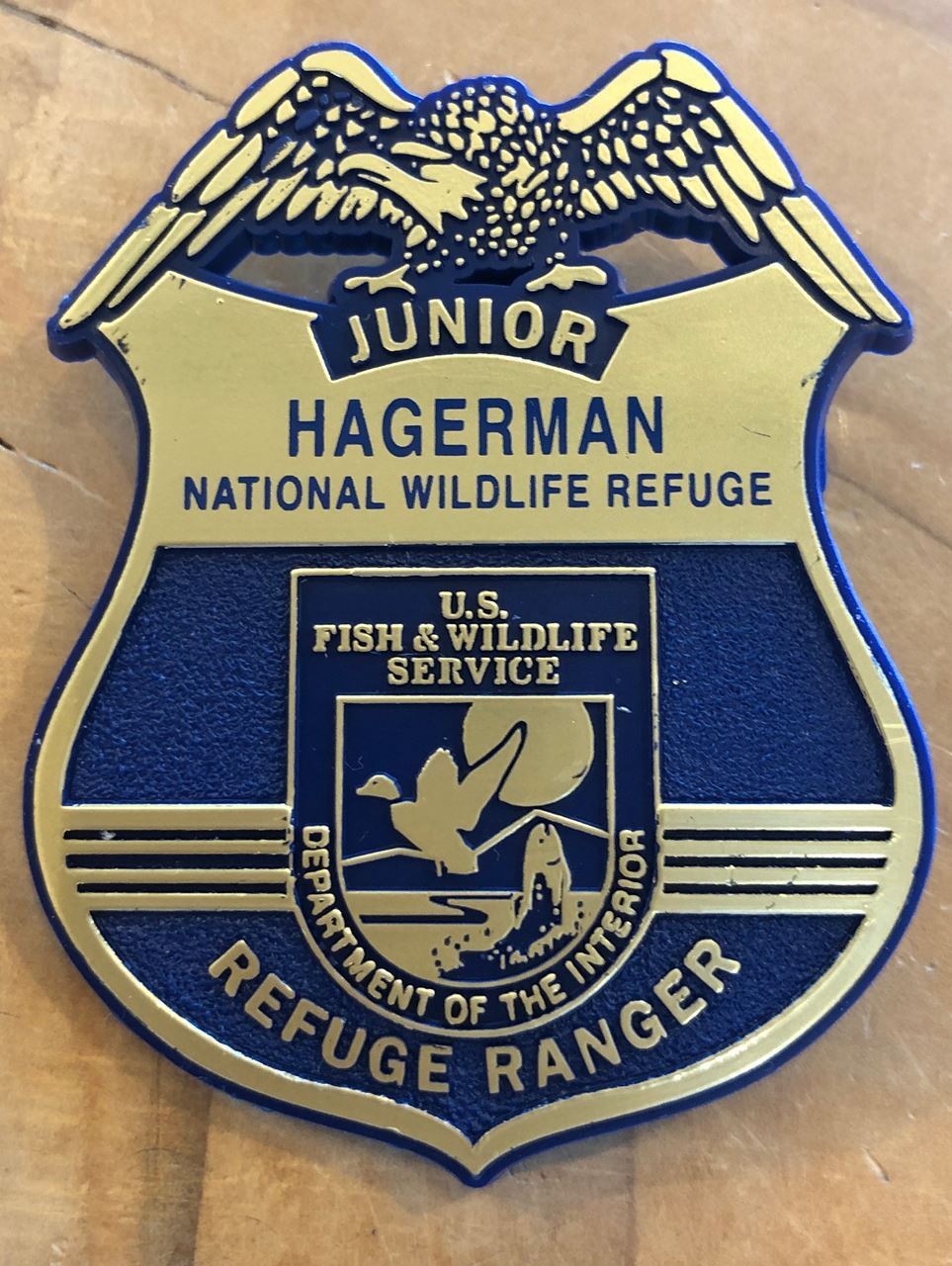|
It’s Hammer Time, Proceed with Caution! Article VIII of our Rewilding Series by Karen Glenn A close-up of a hammerhead worm, Bipalium kewense, an invasive worm species showing up in Grayson County. Photo: Kevin Ambrose. It looks like a new invasive species has arrived in Grayson County. A close friend of mine sent a picture of a large worm she found on her patio in Denison a couple of weeks ago. It turned out to be one of our newest threats to the local soil ecosystem, a hammerhead worm, Bipalium kewense. I have heard about this voracious predator of our local earthworms, but I had no idea they may be in local soils, although I had been noticing a lot of invasive jumping worms this Spring. The hammerhead flatworm is being added to an already over-burdened native soil ecosystem struggling to survive new poisons, competitors, and predators. Earthworms are not creatures that attract much research funding in the wild, so no one really knows how many species of earthworms are native to north Texas. Websites, such as iNaturalist, help to identify species and locations across the state, but worms often get overlooked. Unfortunately, we tend to study organisms only when their presence is either a benefit or a threat to humans in some way, and most worms just go about their business doing worm things. The hammerhead worm is different, so more attention is being paid to this new threat, but our soil has been coping with invasive worms for quite some time. |
Parts of an Earthworm. The clitellum is often an important identifying feature. The size, shape, and color of this “collar” can help to distinguish worm species. The number of segments from the mouth to the clitellum is another of the many characteristics that help to determine the exact species of earthworm. Luckily, our invasive worm species are easily recognized without having to use such detailed criteria. Photo: Unknown. The heavy Spring rainfall has helped to make earthworms more visible, as they surface and move to higher ground in saturated soils, which makes this the perfect time to learn how to identify invasive worm species and learn what to do if you find one. While the invasive jumping worm is not harmful to people or pets, the jury is still out on the dangers of the hammerhead worm, due to its toxic secretions. When approaching an unfamiliar species, whether plant or animal, it is always an excellent idea to use caution and learn as much as possible before taking any action. While identifying the many species of worms in north Texas can be quite challenging, there are a few easily spotted characteristics that help to distinguish the hammerhead worm and the invasive jumping worm from our native worm populations. One easily spotted body part, the clitellum, is often used to confirm species, along with color and other visible markings. |
Jumping worms (Amynthas spp.) go by many common names due to their antics. When disturbed or uncovered they thrash wildly about, which has led to the monikers Alabama jumper, Jersey Wriggler, Crazy Snake-Worm, or Asian jumping worm, since they originated in eastern Asia. It was first identified in Minnesota in 2006, but it had probably been in American soil for quite some time before it was noticed. Invasive jumping worms are dry and smooth. They do not secrete a slimy substance, like European earthworms. These worms tend to be brownish in color with a much lighter, milky-colored clitellum that is smooth and level with the head and tail segments. They tend to be around 4-5 inches long when they mature |
but often appear as masses of juvenile worms in the Spring as they leave their cocoons. These worms multiply very rapidly, live in the upper few inches of soil, and leave small piles of waste on the soil surface that resemble coffee grounds. This waste is stripped of organic nutrients, as these worms are capable of digesting the nutrients, instead of forming worm castings. In other words, these worms do not cycle nutrients or aerate the soil. Their activity tends to cause more soil compaction, not less, as they remove the organic matter from the soil. They readily infest potted plants and greenhouses, and it is thought that is how they have become so widespread. It is important to investigate potting soil when bringing home new plants. Bare root plants are the safest for preventing invasive species. Just know, if you find one jumping worm, there are many, many more. They cannot survive a hard freeze, but their eggs are encased in cocoons and over-winter easily. There are no known treatments to rid your yard of these worms. Pesticides would just destroy the other soil organisms fighting for survival. Some people have tried tarping an area to kill them with heat, but earthworms can easily move to a safer area and avoid treatments. Like many other invasives, these worms are here to stay, so mitigating their damage and supporting the native worms with plenty of native plant waste is about the only recourse, other than collecting the invaders by hand. If you find some and want to remove them, they can be hand-collected then salted, dehydrated with a desiccant, or frozen for a couple of days. Their cocoons are the size of a mustard seed, so good luck finding them! The best recourse is to be incredibly careful when buying plants or moving mulch around your property. If you find an area heavily infested by these worms, try not to move soil or organic matter from these areas into unaffected soil. Leaving leaves where they fall is always best. The more organic matter the soil holds, the less these worms will make an impact. Hopefully one of the native predators of earthworms will find jumping worms delicious, and the soil food web will find a new balance! A Hammerhead worm, Bipalium kewense, one of the newest invaders in our area. Photo by Martin LaBar. The hammerhead worm, Bipalium kewense, is hard to miss. They may reach lengths of 12-15 inches. One side of the worm ends in a unique half-moon shape, which gives them their name. Their bodies are very uniform and cylindrical, usually tan in color, and have 2-5 dark lines running the entire length of their bodies. They excrete a milky liquid that acts as a neurotoxin and paralyzes their prey, earthworms. If you see one of these worms, they must be handled with caution. Hammerhead worms are not really earthworms. They only have one external opening, and it is in the center of their body. These slimy creatures are actually a species of flatworm. As such, they have a superpower. One making them particularly difficult to manage. If they are chopped into pieces, each of those pieces may grow into a new worm! They reproduce by breaking off sections of their body, so chopping them up actually helps their reproduction! If you see a hammerhead worm, be careful not to touch it. Not enough is known about its toxin to understand if it can harm mammals or not. It is always better safe than sorry. Some people have reported their pets have eaten them with no sign of illness, but there is no documented evidence they are harmless. Wear gloves or carefully pick the entire worm up with a stick, or other tool, and carefully place it into a Ziplock bag. You may either add vinegar, salt, and/or orange oil to the bag for a quick kill, or you may just want to seal it and place it in the freezer for 2-3 days. Once the worm is dispatched the bag may be tossed in the trash. Wash your hands thoroughly after handling these worms or contaminated soil, just to be safe. |
 A Red Wiggler, Eisenia fetida |
A common Nightcrawler, Lumbricus terrestris |
Both the Red Wiggler and the Nightcrawler are introduced European earthworms that have become naturalized and are often used for composting and agricultural activities. |
It may be surprising that most worms commonly bought for fishing, Red Wigglers (Eisenia fetida) and Nightcrawlers (various European Lambricus spp.), are introduced species and considered naturalized. These earthworms have European origins, but they have proven themselves to be valuable to agriculture over the years by aerating the soil and breaking down organic matter for other soil organisms, so we tend to embrace them. It is important to remember modern agricultural practices are as foreign to this land as the worms are, so it should not be surprising these two work so well together! It turns out these same worms are not so great for a native forest ecosystem or habitat. Earthworms, even with all their good actions, interfere with the normal cycling of nutrients in our native north Texas habitats. Several studies have shown these introduced earthworms tend to keep nutrients in the upper few inches of soil, which is great for growing crops, but not so great for an ecosystem that depends on deep roots to nurture the native plants. They found that soil hydrology, seed bed characteristics, and the soil food web may all be negatively affected when non-native earthworms enter an ecosystem.
A Redhead Worm, Lambricus rubellus. One of the common earthworm species on Sticker Hill. This worm acts as an important primary consumer of organic matter in the soil ecosystem. They help to support the soil biome by breaking down organic matter, distributing the nutrients within the soil, and loosening compacted soil.
There are several Lambricus species of earthworms in Grayson County, but as far as I know, no one has surveyed the county to document them by species or location. I have found mostly Lambricus rubellus. redhead worms, on my property, along with a few other European earthworms. (I was quite relieved to see the clitellum was a darker color!) Several sources have suggested hammerhead worms and jumping worms have been here for many decades. This may be true since they live a relatively uneventful life underground, and we usually only see what we are looking for.
Refuge Update: Roads, including Wildlife Drive, closed for flooding but the Visitor Center is Open and Second Saturday and Butterfly Garden Walks are not cancelled. All Areas, including the Visitor Center, will be closed July 10 - 11 for Aerial Hog Control The Lake Texoma level has dropped to 620.9 and clean-up efforts have started. The roads, trails and signs received a lot of damage and will take some time to look nice again. Please remember that all 3 staff members certified to operate heavy equipment left the refuge in March through the Deferred Resignation Program. It will be up to the remaining 4 refuge employees, one equipment operator from Tishomingo Refuge, and Refuge Volunteers to get everything back in order to the extent possible. Patience is appreciated! Thank you to our Outdoor Volunteer Crew who worked hard to get parts of Harris Creek Trail back open. None of the trails are closed to walking, but they have not been cleared so use caution. The goal is to have Wildlife Drive open and usable by July 3rd but most of the gravel washed away and it WILL be dusty! |
|
Adopt-A-Goose (Or An Entire Field)
Feed the Snow and Ross's Geese Over-Wintering at Hagerman National Wildlife Refuge
Each winter, thousands of Snow and Ross’s geese visit Hagerman National Wildlife Refuge (HNWR). These geese have migrated thousands of miles from nesting grounds near the Arctic Circle to HNWR. To provide a vital food resource for these exhausted and hungry travelers, HNWR plants fields of winter wheat. The Friends of Hagerman National Wildlife Refuge (FoH) sponsors the “Adopt-a-Goose” fund raiser to help offset budget constraints of the refuge and purchase the wheat seed needed to plant the fields. Please consider supporting our effort with your generous donation.
How Can You Help?
Adopt a Goose
· Your $20 donation will buy one bag of wheat seed
Adopt an Entire Field
· The donation levels listed below will buy enough seed to plant the entire field
|
|
What Are The Benefits?
|
|
Why Did FoH Start Adopt A Goose?
346 acres (15 fields) planted in 2021 193 acres (10 fields) planted in 2024
What Is Being Provided By HNWR And FoH?
|
|
Do You Want To Help Make A Difference? Become a member of the Friends of Hagerman NWR. In 2024, FoH volunteers:
|
|
|
The Friends of Hagerman NWR Foundation is a nonprofit 501(c)(3) entity whose mission is to instill reverence, respect and conservation of our wild creatures and habitats through supporting environmental education, recreational activities and programs of Hagerman National Wildlife Refuge and the U.S. Fish and Wildlife Service. No goods and services are to be received by donors; therefore, all donations may be tax-deductible. |
Plant of the Month: Gregg’s Mistflower By by Teresa (TJ) Farler While volunteering in the Butterfly Garden, I was introduced to Gregg’s Mistflower (Conoclinium greggii). Gregg’s Mistflower is a Texas native that serves as a good nectar source for bees and butterflies. It is especially attractive to the Queen butterfly. The flowers have a misty appearance, and the foliage is bright green with a pinnate leaf structure. Gregg’s Mistflower can spread effortlessly in optimal growing conditions; however, the plant can be easily removed to contain it within your garden space. It is drought tolerant, can be grown in full sun to part shade, and is suitable for xeriscaping. One of the perks of volunteering in the Butterfly Garden at Hagerman is the chance to take home "excess plants" that have been removed from the garden. The Gregg’s Mistflower I have in my pollinator gardens was one such “excess plant” from the Butterfly Garden. The plant is easy to transplant, and once established in your garden, it requires very little care. In one of my gardens, I have winecups in the front, Gregg’s Mistflower, and some random zinnias growing together. It’s a haven for butterflies and bees! This pollinator garden may look a little “unkempt,” but it is always buzzing with pollinators. Winecups in the front, Gregg’s mistflower, and some random zinnias growing together In another pollinator garden, my Gregg’s Mistflower is nestled behind the coneflower and the zexmenia. This pollinator garden is a little more structured. The Gregg’s Mistflower is contained and requires very little maintenance. In addition to being a beautiful plant in your garden, Gregg’s Mistflower plays a vital role in the reproductive cycle of the Queen butterfly. The plant produces a natural compound that is poisonous to livestock but not to Queen butterflies. When you see Queens nectaring on Gregg’s Mistflower, most will be males seeking the intermedine compound found in the nectar. The males convert part of the intermedine into a pheromone that attracts females. After mating, the males provide the remaining unchanged intermedine to the female as a “nuptial gift.” When the female lays her eggs, the intermedine is passed into them, making the eggs toxic and unpalatable to predators. |
Mistflower contained in my garden and requiring very little maintenance; Queens nectaring on Gregg’s Mistflower in the Refuge's Butterfly Garden. |
Second Saturday: Mammals of Texoma with Dr. Bryon Clark Saturday, July 12, 2025 at 10:00 AM in the Visitor Center Photo by Bryon Clark Please join us for July’s Second Saturday Program by Dr. Bryon Clark, a retired mammalian ecologist, professor, and university administrator. His talk will highlight the rich diversity of mammals inhabiting North Texas, especially those likely to be found at Hagerman National Wildlife Refuge. Of the more than 160 native and introduced terrestrial mammals found in Texas, over 40% occur in North Texas. While many visitors to Hagerman are familiar with the larger and more charismatic species such as the white-tailed deer and coyote, fewer know about the hidden diversity of smaller and more cryptic species of bats, rodents, and shrews. Bryon will share facts, anecdotes, and stories about mammals from his more than 40 years of research and teaching. Future Second Saturday Programs |
|
|
Butterfly Garden Walks
Registration is not necessary |
Pipevine Swallowtail (right) by Laurie Sheppard |
Birding with Jack: The Weekly Bird Census Left to Right: Mike Petrick, Nancy Riggs, Jack Chiles and Terry Goode Each Tuesday a team of experienced birders, including Master Naturalist Jack Chiles, traverse 35 miles of refuge roads and hiking trails, documenting every bird they encounter. This Bird Census is reported to The Cornell Lab of Ornithology for use in research, and each week we will bring you a link to their actual bird count, and a summary of their adventures.
On a cloudy day the bird census crew was able to travel down Wildlife Drive although it is still not open to the public. Hopefully it will be open to the public sometime this week. There is almost no vegetation that survived two months of being submerged. But 5 species of shorebirds were present, Killdeer, Spotted Sandpipers, Greater and Lesser Yellowlegs and a couple of Willets. 244 Canada Geese were counted. Snowy Egrets were numerous 78 and Great Egrets 47, Little Blue Herons 3, Great Blue Herons 27 Green Herons 5, Western Cattle-Egrets 37 and 1 Tricolored Heron. 83 Purple Martins was a good count. Bunting count was good with 6 Blue Grosbeaks, 22 Indigo Buntings and 21 Painted Buntings. The total species count for the day was 70. Today's photos contributed by Mike Petrick, a part of our census group, the American Lotus at Meadow Pond and a Red-headed Woodpecker bringing home dinner.
Watch for the census results every Tuesday evening: Bird Census Results |
New Updated Photography Navigation Guide! This guide was created in 2010 by the Photo Club to help people prepare for their visit to the Refuge. It has been refreshed with updated information. This guide tells you what photo opportunities are available as you navigate down the roads as well as the hiking trails. Upcoming events
Join us to see the Meadow Pond Lotus Flowers! Time and Details TBA
We’ll hop in the van bright and early for a two-mile ride down Meadow Pond Trail to witness this incredible marvel of nature. Excellent photo opportunity, available to members only. Details will be announced via email to photo club members, or on our website. The Photo Club's First Youth Photo Clinic was a tremendous success! Several youth participated, check out their amazing photos below! Watch for the next one in the fall. Photos by Addison Sato Photos by Shyam Tiruvaipati Photos by Trey Underwood |
Friends of Hagerman NWR Annual Nature Photo Contest

2024 Best in Show: The Huntress by Jeff Gladden
The Annual Friends of Hagerman National Wildlife Refuge (HNWR) Nature Photography Contest sponsored by the Friends of Hagerman NWR is open to photographers of all ages and skill levels. Children are encouraged to enter and compete in the Beginner category. Ribbons and cash prizes are awarded in multiple divisions and categories, with a unique Best in Show for Youth.
Judges are asked to consider composition, originality, and visual impact. Winning photographs will be announced at the Second Saturday presentation in November.
Overview
- Registrations are accepted through midnight on September 30th.
- Youth are participants that will not reach 18 years of age before October 1 this year.
- Photographs must have been taken within the boundaries of the Hagerman National Wildlife Refuge within the past five calendar years.
- Photographs may be taken with any electronic equipment – such as camera, smartphone, tablet, or laptop.
- There are two divisions: Beginner and Intermediate/Advanced. All youth participants will be judged in the Beginner category.
- There are six categories: Artistic, Birds, Flora/Macro, Monochrome, Landscape, and Wildlife
-
We would love to see more landscape photographs. Try your skill at Monochrome (e.g., black and white) photo.
-
First Place, Second Place, and Third Place in each category in each division. Winning participants will receive a ribbon. First place winners will receive $25 in addition to a ribbon.
- Best in Show. Winning participant will receive $50 and a ribbon. Best in Show is selected from the first-place winners in each division/category.
- Best in Show Youth. Winning participant will receive $25 and a ribbon. Best in Show Youth is selected from all youth participants’ photographs.
Click on Photo Contest Tips for suggestions on how to get an impactful image.
This year's Nature'Ology Campers learned all about nature: fossils, prairies, spiders, birds, snakes and water cycles! They made a terrarium, enjoyed the day with other young nature enthusiasts! This program has become so popular, that it fills up very quickly. By opting into this mailing list, you will receive an email with a link to apply for a confirmed reservation before reservations open to the general public in the spring of 2026. Join our Mailing List for Nature'Ology June 2026! Nature'Ology is A free single day camp for children 11 or 12 years old |
Join Cindy Steele for: The Refuge Rocks! Programs for Children Future events (Registration Required)
|
| Puddles' Craft Corner By Cindy Steele, Master Naturalist |
The Magical World of Fireflies!
Welcome back to Puddles’ Craft Corner. It’s a quiet, warm summer evening with no human in sight for miles in the woods. As the sun sets, tiny flashes of light start to flicker throughout the trees. At first, there’s just a few, but soon hundreds of blinking lights are floating in the forest. Fireflies have come out for the evening.
It’s the middle of the summer and it’s time for one of the most magical times of the year! Most of us remember running outside at dusk with a jar in hand. Even as children, we knew that summer nights become magical when the fireflies flash their brilliant behinds in a spectacular display of lights. With approximately 2,000 firefly species around the world, these night-loving insects can be found near wet and wooded areas all over the world.
Call it a lightning bug, a glow bug, or a firefly. Just as long as you remember it’s a winged beetle, not a fly! Fireflies are from the Lampyridae (say “LAM-puh-rid-eye”) family, which sets them apart from all of the other beetles. To be a member of this special family, a beetle must be able to glow.
Fireflies have a special light-making organ, called a photic organ, located just below their abdomen. To make light, the fireflies take in oxygen, which mixes with a natural substance called luciferin (say “loo-SIF-er-in”) found in the cells of these organs. A recently...
Continue to the Lesson and full craft instructions.
Enjoy other Nature Crafts with Puddles
Junior Ranger Program
|
| The Junior Ranger Pledge As a Junior Ranger at Hagerman National Wildlife Refuge, I pledge to protect outdoor creatures small, big and huge. To keep the water, air and land clean. To make enjoying nature a routine. I will share my new skills with family and friends. When people and nature work together, everybody wins! |
|
Sponsors Enable the Friends to…
Introducing New Membership Levels! All memberships now include your family and the Photo Club Join Today! Memberships available for $20 |
Come, Take a Tour on the Wildlife Explorer! Come join us for a ride on the Wildlife Explorer! Our new and beautiful tram is available for ninety-minute tours of Hagerman every Saturday and Sunday, weather permitting. Our tours are as varied as our drivers. Each tram driver has her/his approach to the tour: you may learn about wildlife, birds, habitat, refuge history, photography, you name it! To paraphrase, “a Wildlife Explorer tour at Hagerman is like a box of chocolates, you never know what you’re going to get.” But you know it’s going to be good! Come see us! Lots of stops for bird-watching and photography. |
Register for a Tram Tour Today! |
|
|
Early Bird Walk with Jack Chiles Bird Walks will resume when the forecast calls for cool breezes instead of spontaneous melting! |
Do You Like to Work Outside? The Refuge Needs You! |
It takes a lot of people to have a beautiful garden! The Wednesday Garden Team Love to work with native plants and meet other gardeners? Come and help us add plants, weed and mulch our beautiful butterfly garden. Garden Team volunteers get first dibs on thinned native plants as well as access to seeds and cuttings for propagation. Gardeners meet on most Wednesdays, but times vary. Contact Us to subscribe to the volunteer garden team weekly email. Provide own tools and gloves. Minimum age 18, or 16 if accompanied by parent/volunteer. |
Mowing and Refuge Beautification: The Work Crew Do you enjoy working outside, mowing, sprucing up hiking trails, trimming and removing brush and general cleanup? Show your love for nature by joining the Outdoor Crew at Hagerman National Wildlife Refuge. Outdoor Crew volunteers meet on the First Tuesday and Fourth Saturday of every month. Contact Us for exact times, dates and other details about joining the volunteer Work Crew. Scouts welcome! |
Visitor Center Volunteers Needed! |
Do you enjoy meeting all kinds of people from all over the world, and like-minded people in our area? If yes, consider joining our team of Visitor Center Volunteers. You will greet refuge guests, distribute maps and other refuge information, and make sales in the gift shop. Shifts available every day of the week: Monday through Saturday 9 AM to 12:30 PM and 12:30 to 4:00 PM, Sunday 1:00 to 5:00 PM. Training is provided. Contact Us if interested. |
| Thank You To Our Contributors: Jack Chiles, Bryon Clark, Teresa (TJ) Farler, Jaime Jimenez, Nancy Miller, Cindy Steele Refuge Manager: Kathy Whaley Visitor Services Manager: Spencer Beard Friends of Hagerman NWR Foundation 6465 Refuge Road, Sherman, TX 75092 Phone: 903-786-2826 Join us on Facebook: |
Search for any word--do not use quotes for phrases |
Kroger: Stop by the customer service desk at Kroger and link your Kroger Card to the Friends of Hagerman: the Friends will get rewards for every dollar you spend, at no cost to you.
Please add info@friendsofhagerman.org to your contacts to ensure delivery of registration confirmations, account information and the Featherless Flyer
See you at the refuge!



.jpeg)


.jpg)


.jpg)


.jpg)






